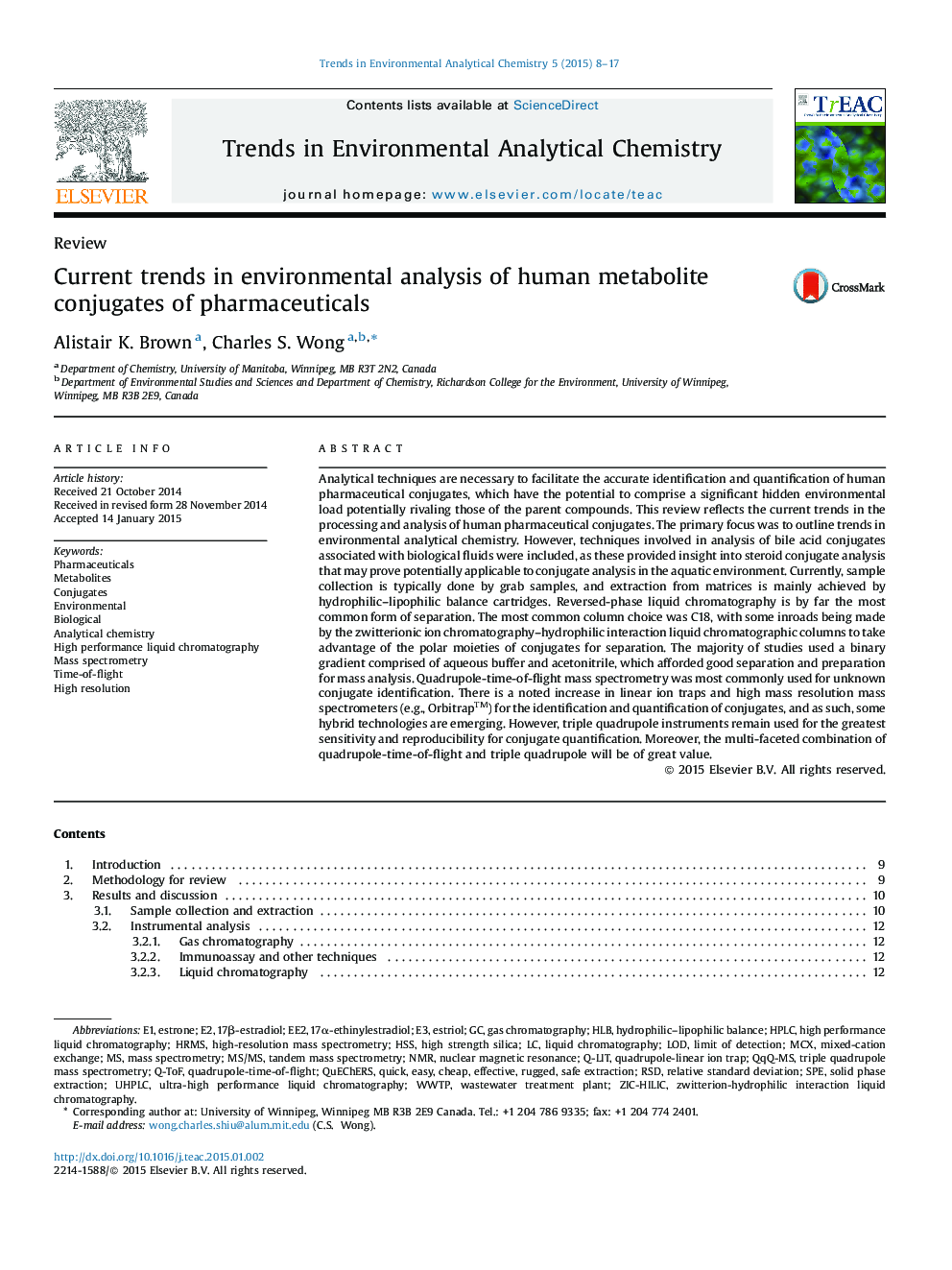| کد مقاله | کد نشریه | سال انتشار | مقاله انگلیسی | نسخه تمام متن |
|---|---|---|---|---|
| 1250042 | 1495955 | 2015 | 10 صفحه PDF | دانلود رایگان |
• Insights from biological sample analysis can be extrapolated to environmental analysis.
• SPE coupled to RP-HPLC-MS/MS is most common for identification and quantification.
• Triple quadrupole MS and high resolution MS complementary for analysis.
• Technologies are emerging to take advantage of the polar moieties of conjugates.
• Analysis of parent compounds and conjugates simultaneously not yet robust.
Analytical techniques are necessary to facilitate the accurate identification and quantification of human pharmaceutical conjugates, which have the potential to comprise a significant hidden environmental load potentially rivaling those of the parent compounds. This review reflects the current trends in the processing and analysis of human pharmaceutical conjugates. The primary focus was to outline trends in environmental analytical chemistry. However, techniques involved in analysis of bile acid conjugates associated with biological fluids were included, as these provided insight into steroid conjugate analysis that may prove potentially applicable to conjugate analysis in the aquatic environment. Currently, sample collection is typically done by grab samples, and extraction from matrices is mainly achieved by hydrophilic–lipophilic balance cartridges. Reversed-phase liquid chromatography is by far the most common form of separation. The most common column choice was C18, with some inroads being made by the zwitterionic ion chromatography–hydrophilic interaction liquid chromatographic columns to take advantage of the polar moieties of conjugates for separation. The majority of studies used a binary gradient comprised of aqueous buffer and acetonitrile, which afforded good separation and preparation for mass analysis. Quadrupole-time-of-flight mass spectrometry was most commonly used for unknown conjugate identification. There is a noted increase in linear ion traps and high mass resolution mass spectrometers (e.g., Orbitrap™) for the identification and quantification of conjugates, and as such, some hybrid technologies are emerging. However, triple quadrupole instruments remain used for the greatest sensitivity and reproducibility for conjugate quantification. Moreover, the multi-faceted combination of quadrupole-time-of-flight and triple quadrupole will be of great value.
Journal: Trends in Environmental Analytical Chemistry - Volume 5, February 2015, Pages 8–17
